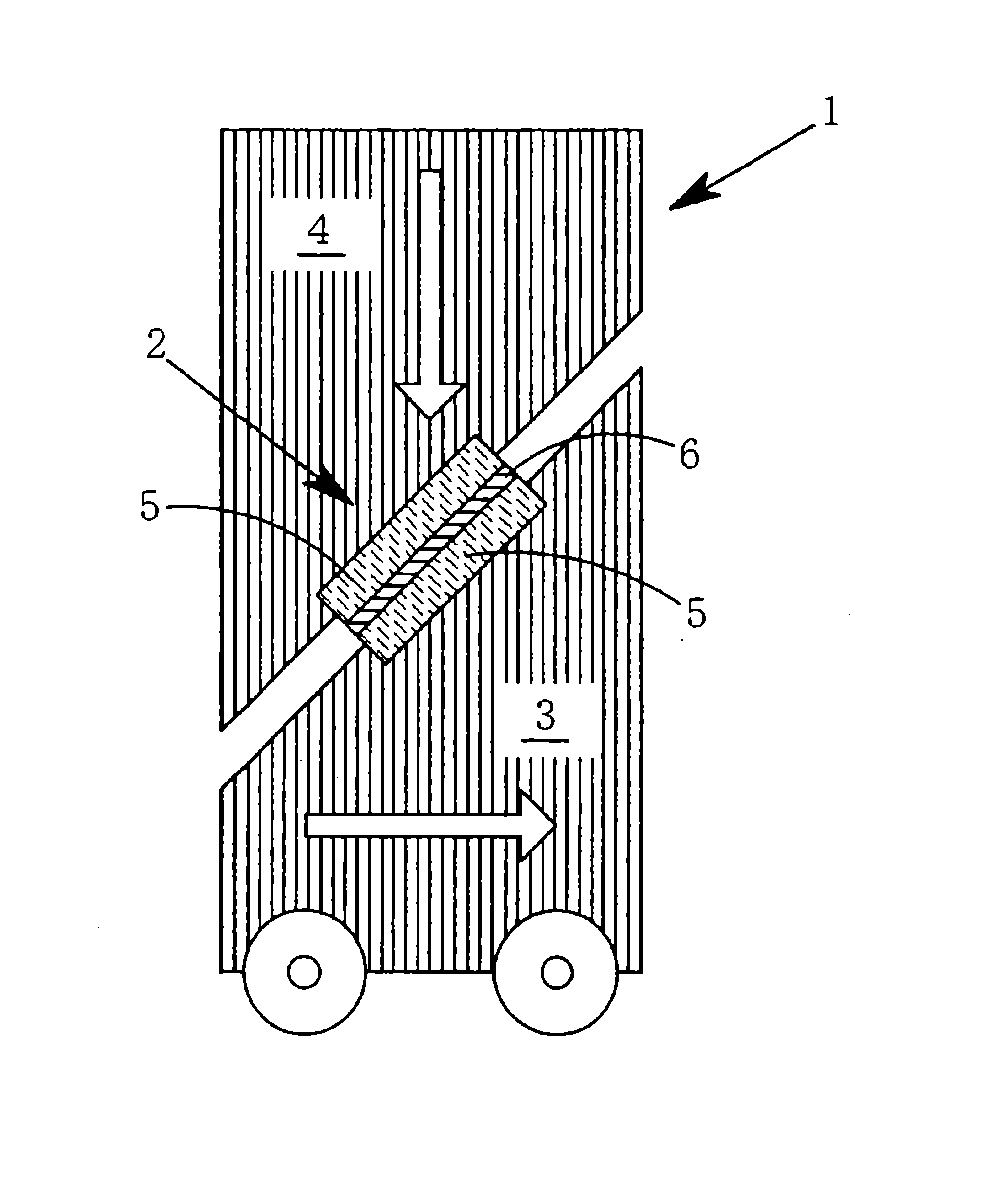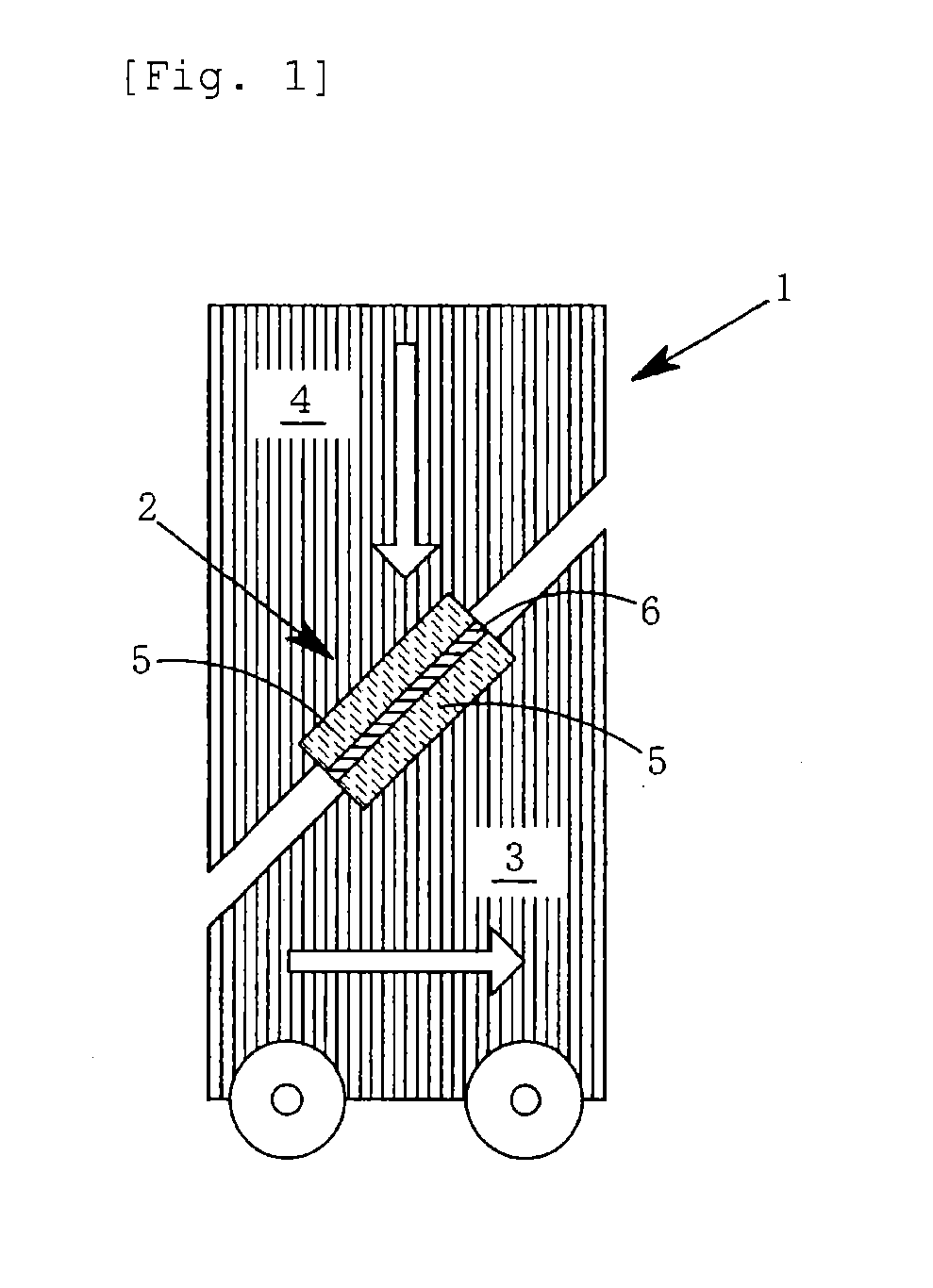Interlayer film for laminated glass, method for producing same, and laminated glass using same
a technology of laminated glass and interlayer film, which is applied in the direction of wood working apparatus, antimony compounds, synthetic resin layered products, etc., can solve the problems of poor low heat resistance, and inability to shield, and achieve excellent heat resistance and light resistance, excellent transparency, adhesion, and heat ray shielding properties.
- Summary
- Abstract
- Description
- Claims
- Application Information
AI Technical Summary
Benefits of technology
Problems solved by technology
Method used
Image
Examples
example 1
[Preparation of Interlayer Film for Laminated Glass]
[0093]A methanol dispersion of anhydrous zinc antimonate (“CX-Z693M-F” produced by Nissan Chemical Industries, Ltd.), which is ZnSb2O6, was subjected to grinding with a bead mill, thereby preparing a methanol dispersion of zinc antimonate at 60 wt % concentration. A dispersion (d1) obtained by mixing 1.33 g of the dispersion thus obtained, 0.2 g of “DISPERBYK-102” produced by BYK Japan KK as phosphoric acid ester, and 9.9 g of triethylene glycol-di-2-ethylhexanoate (hereinafter, abbreviated as 3G8) as a plasticizer; and a dispersion (d2) obtained by mixing 10 g of 3G8, 0.14 g of “Tinuvin 328” produced by Ciba Japan K.K. as an ultraviolet absorber, and 0.08 g of a 25 wt % aqueous solution of a mixture of magnesium acetate and potassium acetate (mixing weight ratio: 2 / 1) were separately mixed with 35.3 g of polyvinyl butyral (starting polyvinyl alcohol having a viscosity average degree of polymerization of 1700, a degree of acetaliza...
example 2
[0096]A sample was prepared in a same manner as in Example 1, other than using 4 g of a tin-doped indium oxide-isopropanol dispersion at 20 wt % concentration (“ITO isopropanol dispersion” produced by Mitsubishi Materials Corporation) instead of the methanol dispersion of zinc antimonate at 60 wt % concentration in Example 1. The sample preparation conditions are shown in Table 1. The obtained interlayer film for laminated glass and the obtained laminated glass were evaluated for their performance and the results are shown in Table 2.
example 3
[0097]A sample was prepared in a same manner as in Example 1, other than adding 0.2 g of a 25 wt % aqueous solution of a mixture of magnesium acetate and potassium acetate (mixing weight ratio: 2 / 1) in Example 1. The sample preparation conditions are shown in Table 1. The obtained interlayer film for laminated glass and the obtained laminated glass were evaluated for their performance and the results are shown in Table 2.
PUM
| Property | Measurement | Unit |
|---|---|---|
| mol % | aaaaa | aaaaa |
| thickness | aaaaa | aaaaa |
| mol % | aaaaa | aaaaa |
Abstract
Description
Claims
Application Information
 Login to view more
Login to view more - R&D Engineer
- R&D Manager
- IP Professional
- Industry Leading Data Capabilities
- Powerful AI technology
- Patent DNA Extraction
Browse by: Latest US Patents, China's latest patents, Technical Efficacy Thesaurus, Application Domain, Technology Topic.
© 2024 PatSnap. All rights reserved.Legal|Privacy policy|Modern Slavery Act Transparency Statement|Sitemap



